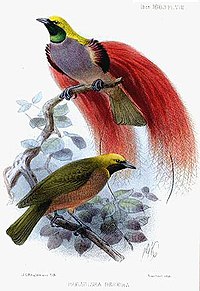
Photo from wikipedia
Flowers are imperative reproductive organs and play a key role in the propagation of offspring, along with the generation of several metabolic products in flowering plants. In Juglans mandshurica, the… Click to show full abstract
Flowers are imperative reproductive organs and play a key role in the propagation of offspring, along with the generation of several metabolic products in flowering plants. In Juglans mandshurica, the number and development of flowers directly affect the fruit yield and subsequently its commercial value. However, owing to the lack of genetic information, there are few studies on the reproductive biology of Juglans mandshurica, and the molecular regulatory mechanisms underlying the development of female and male inflorescence remain unclear. In this study, phytohormones and transcriptomic sequencing analyses at the three stages of female and male inflorescence growth were performed to understand the regulatory functions underlying flower development. Gibberellin is the most dominant phytohormone that regulates flower development. In total, 14,579 and 7188 differentially expressed genes were identified after analyzing the development of male and female flowers, respectively, wherein, 3241 were commonly expressed. Enrichment analysis for significantly enriched pathways suggested the roles of MAPK signaling, phytohormone signal transduction, and sugar metabolism. Genes involved in floral organ transition and flowering were obtained and analyzed; these mainly belonged to the M-type MADS-box gene family. Three flowering-related genes (SOC1/AGL20, ANT, and SVP) strongly interacted with transcription factors in the co-expression network. Two key CO genes (CO3 and CO1) were identified in the photoperiod pathway. We also identified two GA20xs genes, one SVP gene, and five AGL genes (AGL8, AGL9, AGL15, AGL19, and AGL42) that contributed to flower development. The findings are expected to provide a genetic basis for the studies on the regulatory networks and reproductive biology in inflorescence development for J. mandshurica.
Journal Title: International Journal of Molecular Sciences
Year Published: 2022
Link to full text (if available)
Share on Social Media: Sign Up to like & get
recommendations!